The mating season has come around once again. The bees are buzzing, the birds are chirping, and Clock is positively champing at the bit. For days, he roamed the bluffs in a fruitless search for a female. He failed to mate at all last season and his increasing desperation has now driven him to descend deep into the forest. But so far, the only other animals he has encountered today are a herd of edmontosaurs that paid him no heed, a young tyrannosaur that merely observed him from a distance, and an unlucky turtle that he trod on.
But see! Around the next tree stands before him another ankylosaur, a smaller one, which is enough to convince Clock’s very simple brain that it must be a female. And a most unusual one. Her head appears to be narrower than his. Her armour is finer and the scutes around her shoulders are far pointier. And most baffling of all, she has no club at the end of her tail. But none of that matters to Clock. Time now for him to put on a seductive mating display . . .
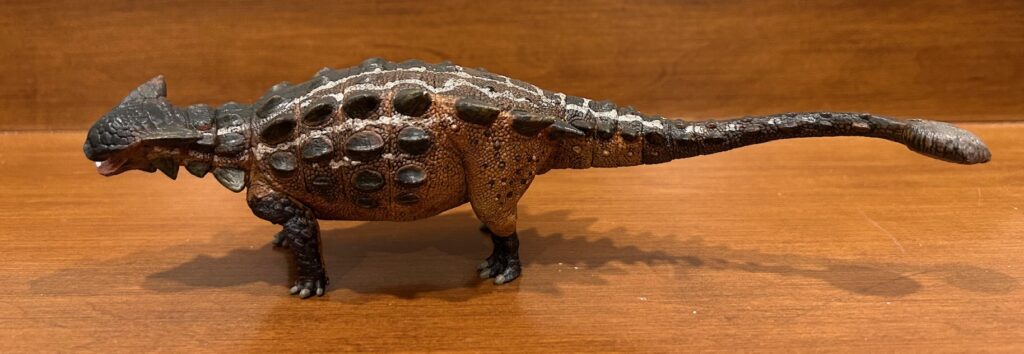
There’s been no shortage of Ankylosaurus toys over the decades, but the vast majority of them frankly haven’t been all that spectacular. In my own humble opinion, the first truly great one was the 2004 Carnegie Collection version, and it remained at the top of the heap until 2017 when the Wild Safari version arrived on the scene. Then in 2019, Sede from PNSO made her debut. And now for 2025, we have an Ankylosaurus from the esteemed folks at Eofauna. Clock, as I call him. Let’s see what this sprauncy chap is all about, shall we?
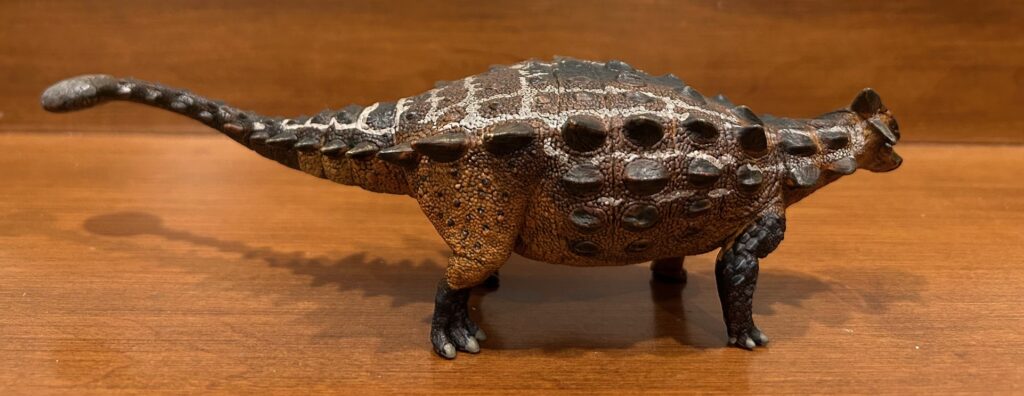
From the tip of his nose to the end of his tail club, Clock measures slightly more than 23 cm long and is 6.5 cm wide at the midsection. He also weighs in at 211 g, which makes him the smallest Eofauna toy to date. By comparison, the Triceratops weighs 293 g and the Tyrannosaurus rex weighs 351 g without its base. He certainly doesn’t seem small, however, especially when compared to most other 1:35 scale Ankylosaurus toys, as you’ll see later on.
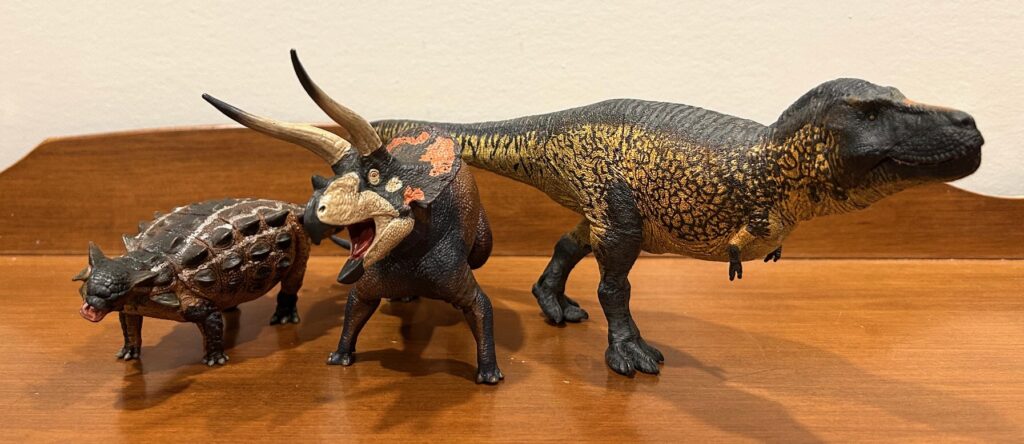
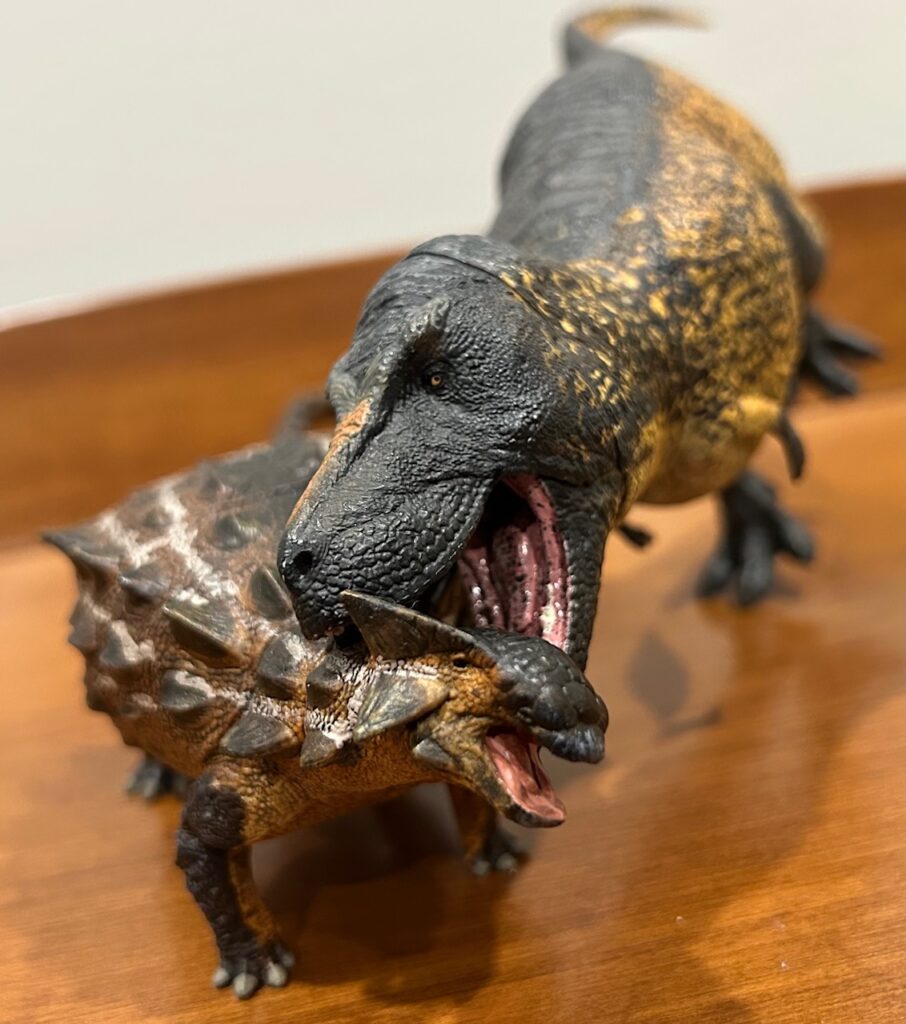
Clock is sculpted with his neck turned to the left, his head tilted to the left as well, and his mouth wide open. His limbs are firmly planted and his torso is shifted in such a way that his back is sloped slightly to the right. His long tail is raised well off the ground and swinging to the left. While his stance could be interpreted as him being ready to defend himself against attack, as depicted in the image above or in his information card, he could just as easily be standing before a ripe berry patch and greedily munching on their wares.
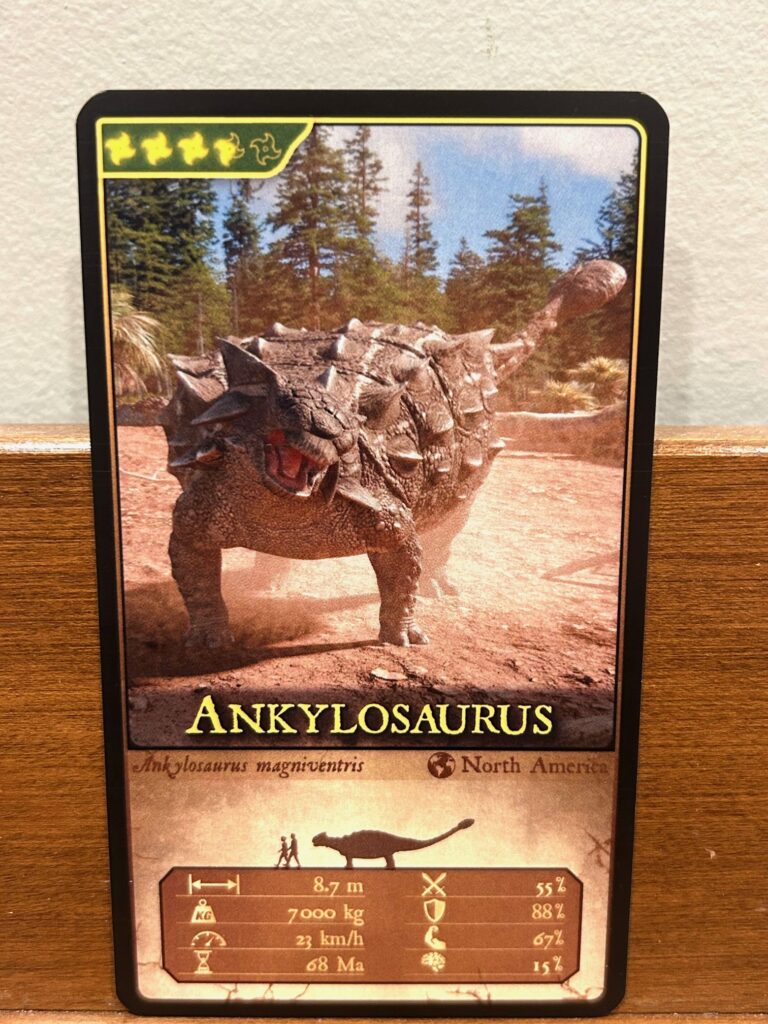
Clock’s head is medium and very dark brown with glossy black eyes, dark grey for his beak, and dark pink for the inside of his mouth. His underbelly is a pale light brown, which gradually gives way to a darker shade along his flanks. The outer sides of his front limbs and his hind feet are painted a very dark brown, with taupe grey claws. The underside of the last two thirds of his tail is also the same shade of very dark brown. His back is dark brown with a large and very dark streak that runs from the top of his muzzle to just before his hip region. The top of his tail is the same colour. The many scutes making up his armour are dark brown and his tail club is a dull grey brown. Finally, the horizontal stripes running down his flanks and back are pale grey brown. It is quite the elaborate colour scheme and it works very well for an Ankylosaurus. I can totally envision it looking this way in real life.

Clock’s head is wider than it is long, has the nostrils located on either side of the arched snout rather than at the front, and large postorbital and jugal horns jutting out at the back, all key features of Ankylosaurus. The inside of his mouth is nicely detailed, with a large, flat tongue and a textured palate, but no visible teeth. His beak and horns are grooved and the top of his head is protected by many caputegulae (flat plates), including a large oval-shaped one in between his nostrils. His neck is protected by two half-rings each made up of six keeled scutes. The outsides of his short and muscular front limbs are protected by many small, oval-shaped scutes. His feet end in five clawed digits.

As befits any proper Ankylosaurus toy, Clock’s torso is positively huge, flattened, and wider than that of any other Eofauna toy. His back is protected by bumpy armoured skin and multiple rows of keeled scutes. The largest and pointiest of these scutes are the ones running along the sides of his hips; he is noticeably spikier than both the PNSO and Safari versions. The scutes on top of his hips are by far the smallest, and spaced the furthest apart. His flanks are protected by three rows of large scutes. His chunky thighs less so, featuring only small, round osteoderms. The hind feet have only three clawed digits.
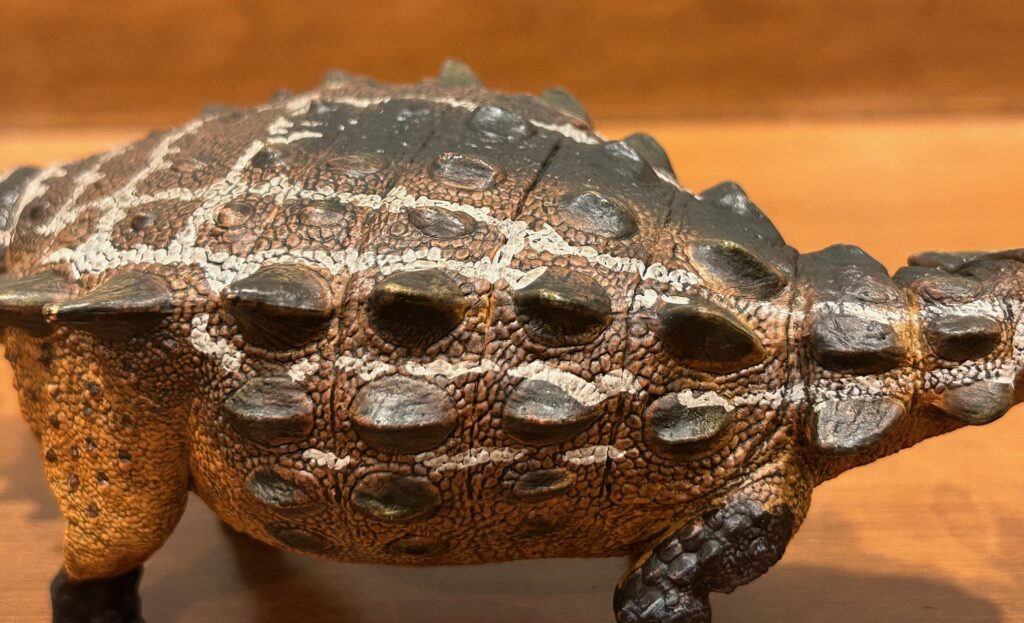

Clock’s tail is lined on both sides with spikes that gradually transition to smaller, more rounded scutes. The famed and mighty club at the tip is flattened and round like a boule of bread, and covered in many grooves and pits. Clock again distinguishes himself from his PNSO and Safari brethren by having a significantly longer and more tapering tail.
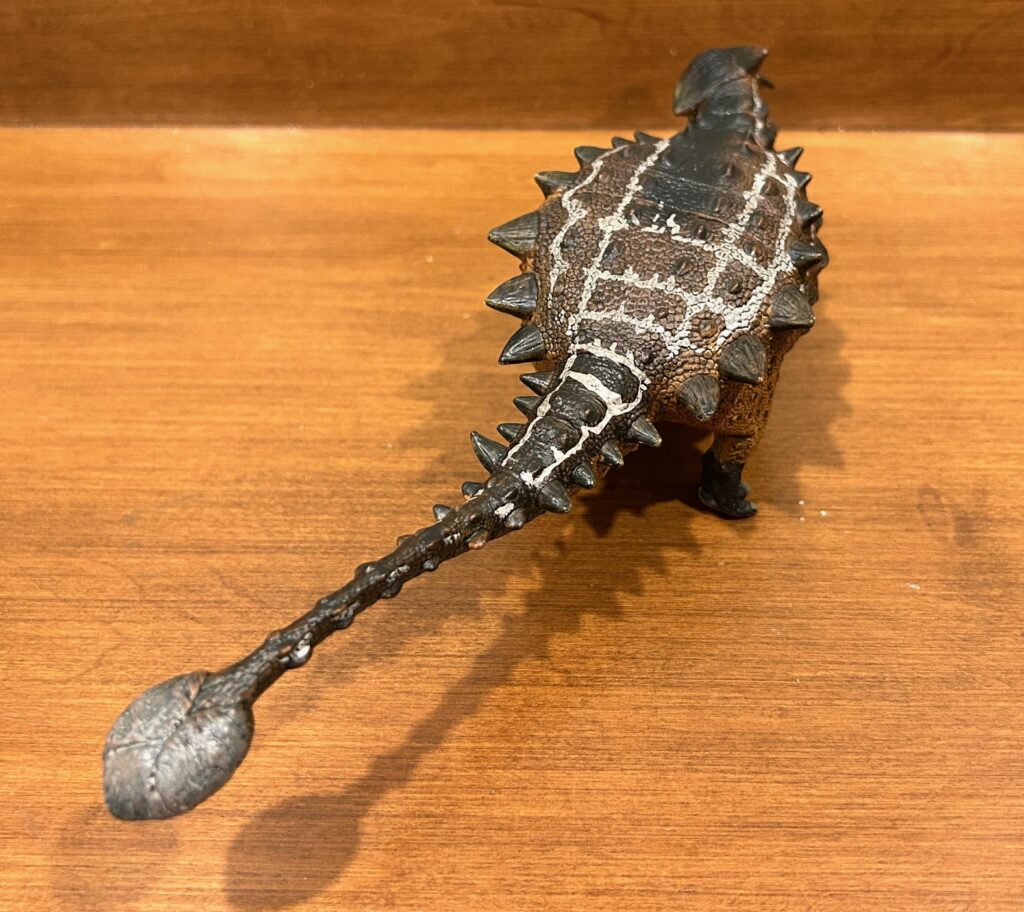
And while Clock’s underside may be unarmoured, it is still meticulously detailed with wrinkles on the throat, folds on the tail, and lots of small, round scales on his belly and limbs. It has long been said that the only surefire way for a T. rex to kill an adult Ankylosaurus was to flip it over onto its back and bite into the belly, but it surely must have taken an immensely powerful and fiercely determined individual to pull off such a feat.
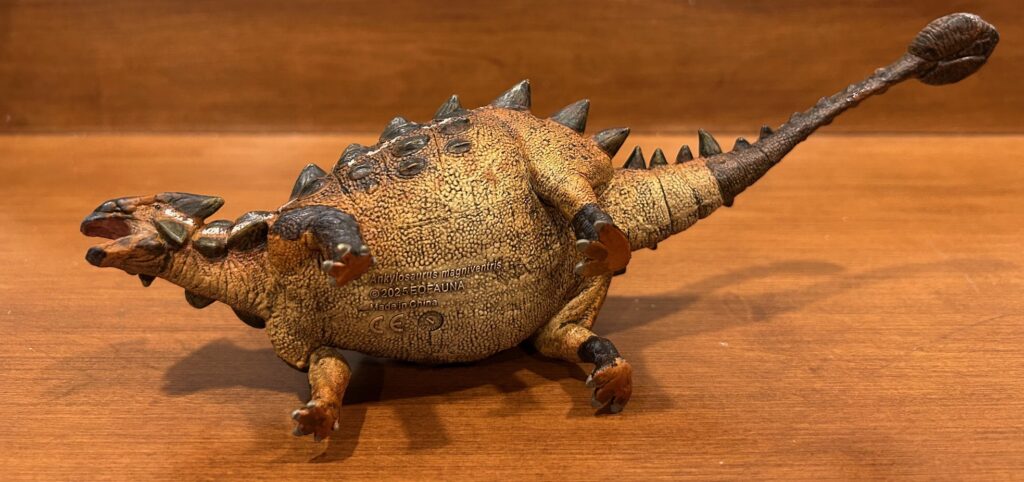
How accurate is Clock? That is not an easy question. Ankylosaurus is presently known from complete skulls, neck bones, the shoulder girdle, humerus, femur, tail club, and pieces of armour, which is really quite good compared to scores of other large prehistoric animals. It can definitely be said then that Clock’s head is correct, and so are his legs and the proportions of his torso. But we cannot be certain as to the length of his tail; it well could be correct, or perhaps it is too long. And unless we someday miraculously discover a Ankylosaurus specimen that is preserved at the same level of completeness and intactness as Borealopelta or Zuul, our understanding of just how the armour on its body was arranged will remain speculative at best. Again, Clock is one of the spikiest recent reconstructions of Ankylosaurus, but most assuredly a plausible one. So really, it’s entirely up to you to decide which toy you think is the most correct.
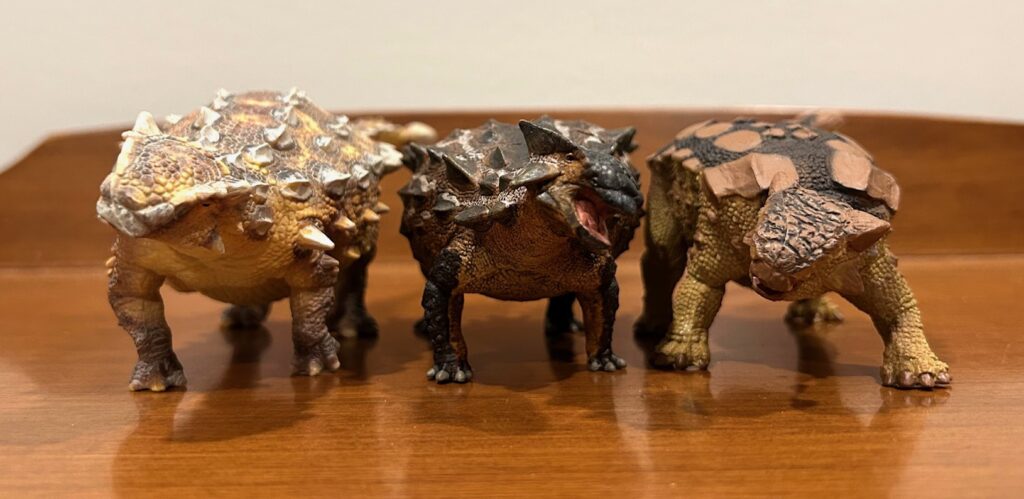
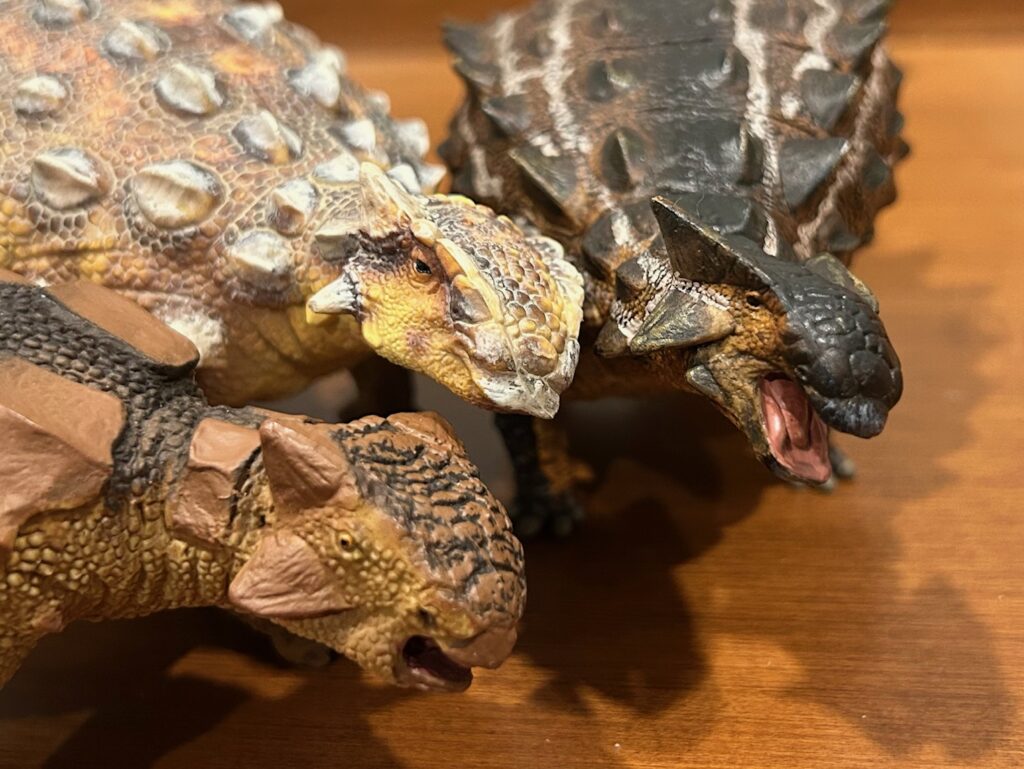
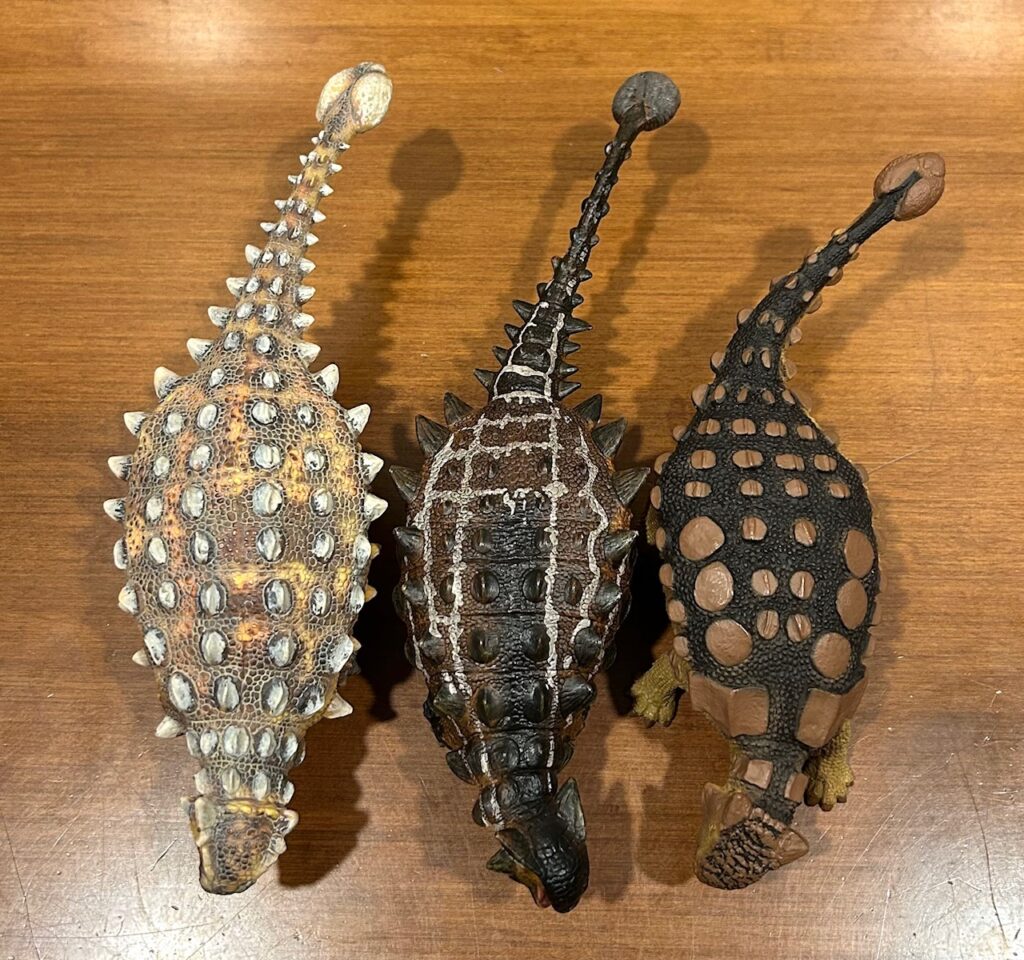
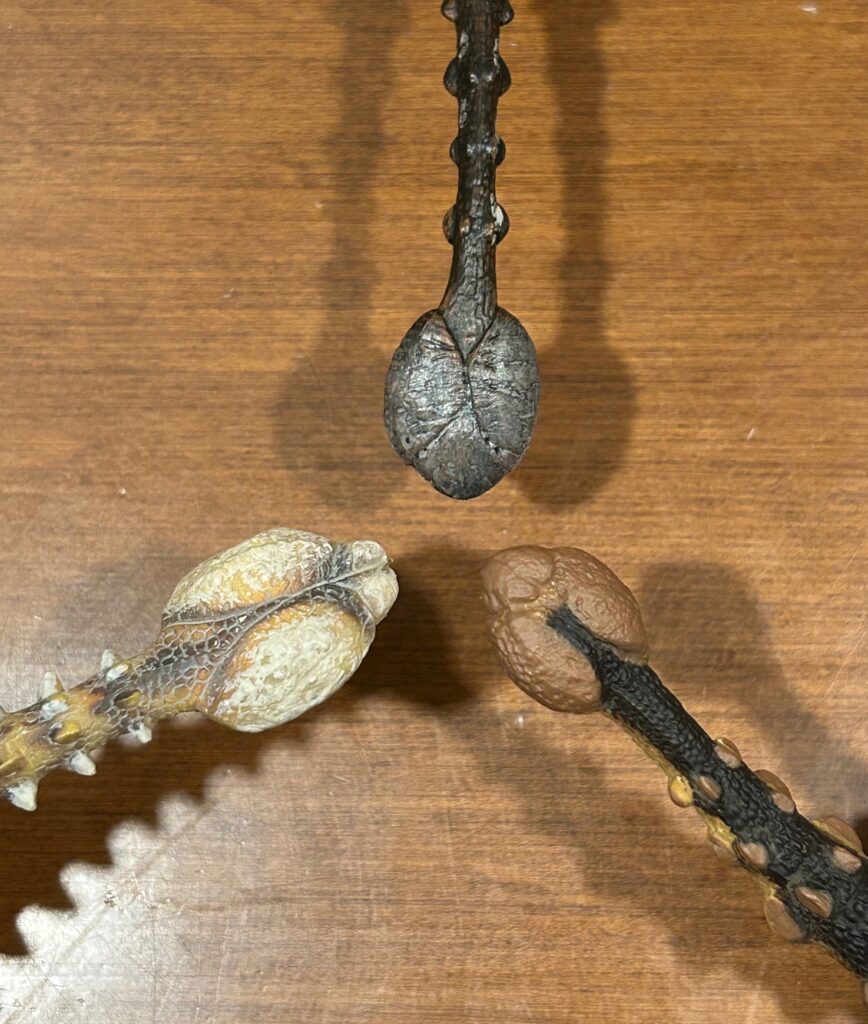
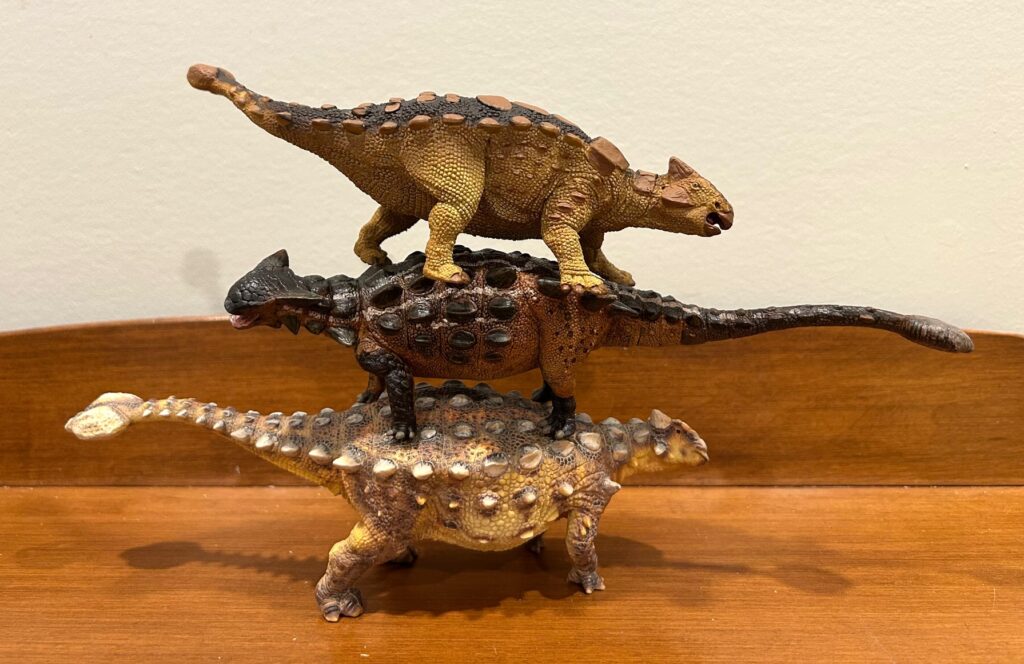
I’ve acquired a number of Ankylosaurus toys over the years, but Clock is now the definitive one in my book. Good colour scheme, dynamic pose, fantastic sculpting, and scientifically accurate within reason. Most definitely worth the purchase. Now what I need is for Eofauna or some other company to make a Denversaurus, which just so happens to be the only large dinosaur from the famous Hell Creek Formation that doesn’t have a toy to its name.
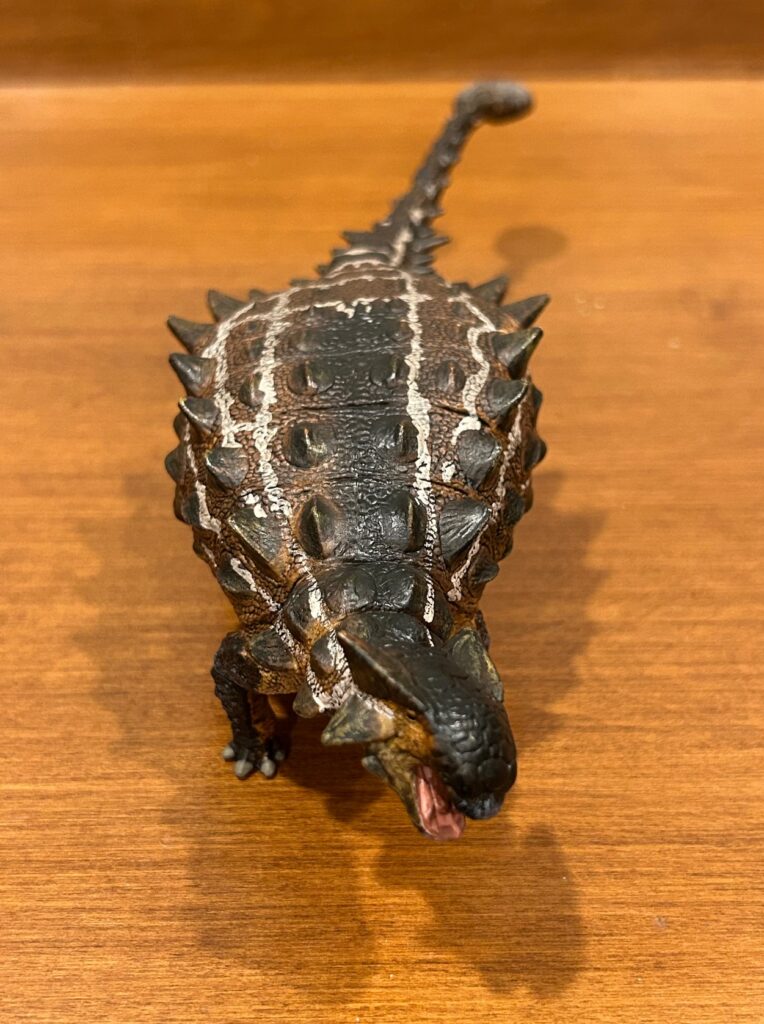
This review is dedicated to Mike Walley and Sue Judd of Everything Dinosaur. From the beginning, they have been my go-to source for Eofauna products, and they have always been nothing but excellent in that regard. Kudos and looking forward to doing more business with you folks! And best of luck with your budding toyline, Evolution!
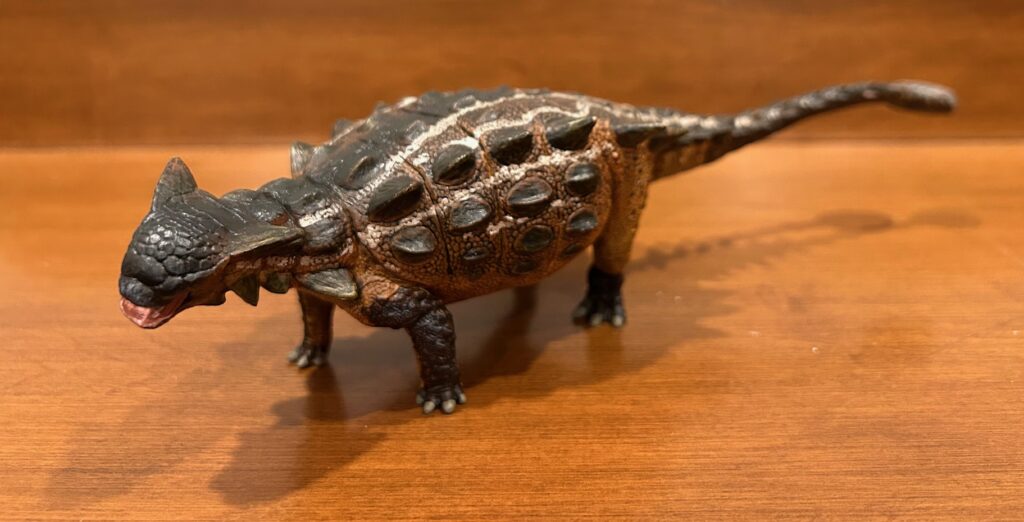
Disclaimer: links to Ebay and Amazon on the DinoToyBlog are affiliate links, so we make a small commission if you use them. Thanks for supporting us!




I’m content with Sede but if I didn’t have her I would get this one.